There are various geometric shapes and dimensions of the mandala, there are not only flat, two-dimensional, but also spatial, three-dimensional. Using the example of Indian Mandala Tribal Raytol, a master class on weaving mandalas is presented.
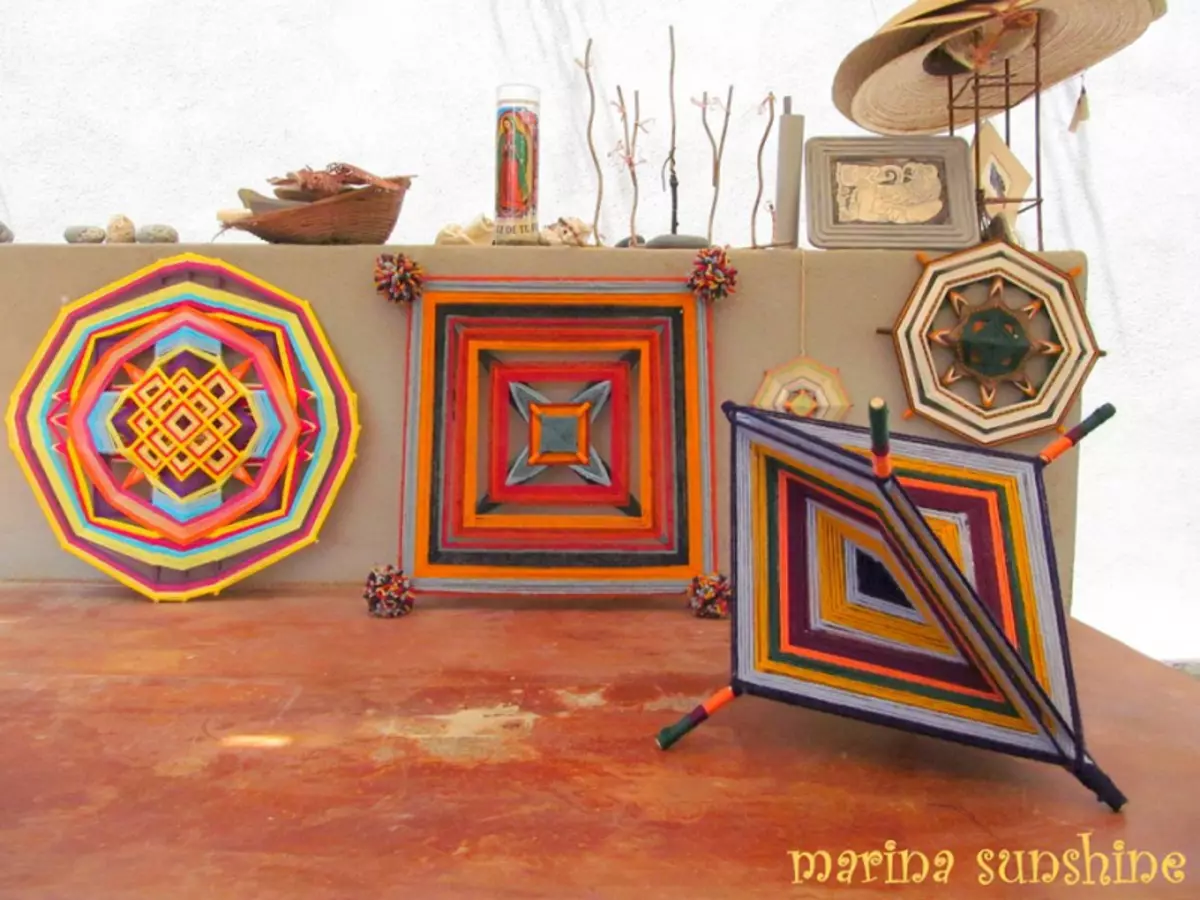
Mandala consists of 12 axes, i.e. 6 sticks, 1 meter long, crossed in the middle, but the size of the sticks can be smaller, and the mandala is solarded in the same way. In general, this master class will teach the mandala not only identical to the presented, but also with other variations of color and weaving techniques.
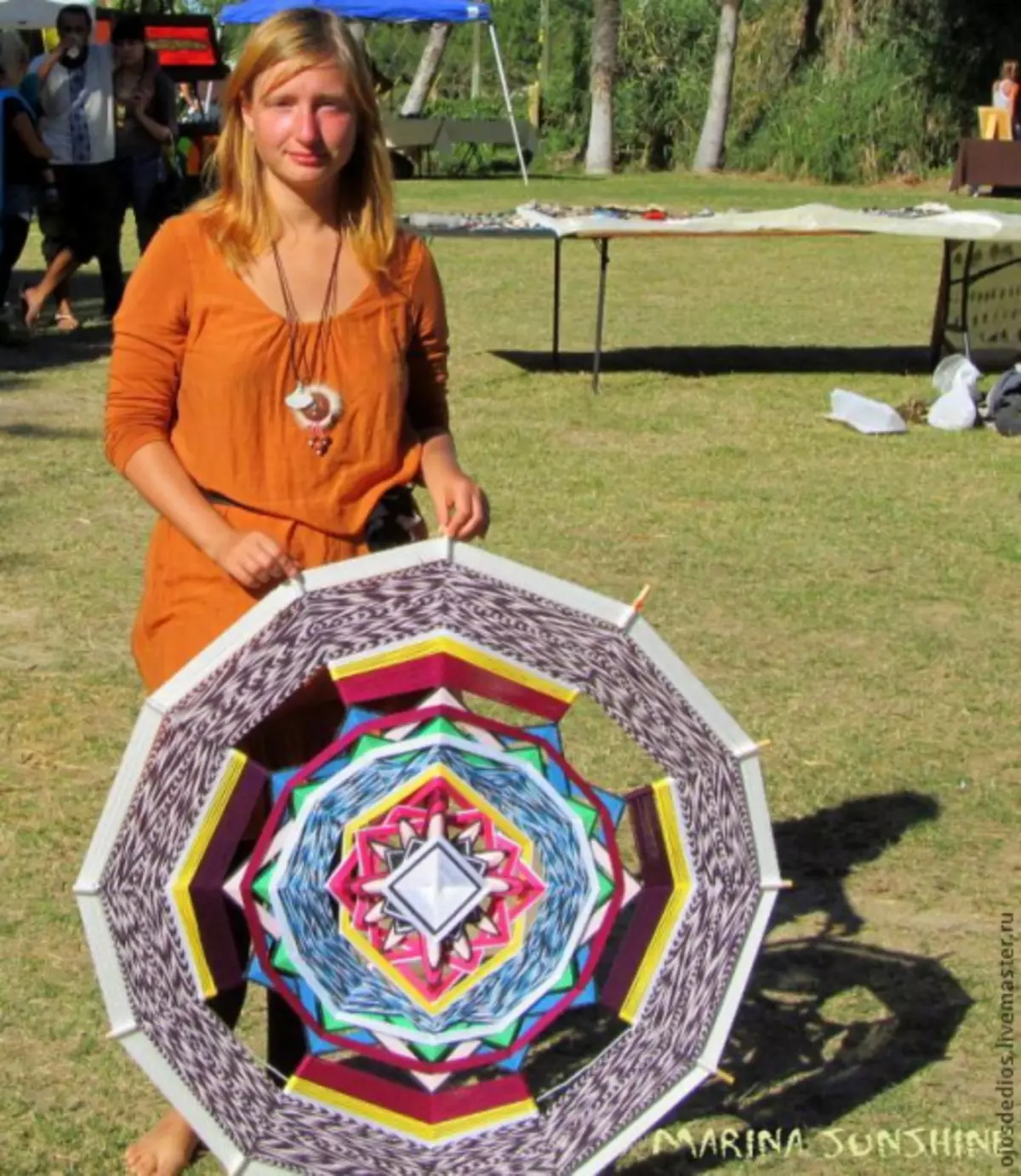
For weaving, scissors are required; Wooden sticks (6 pcs.), 1 meter long, chopsticks can serve even ships for kebabs or toothpicks for small mandala; The yarn of different (11) colors, the composition of the yarn is not important, there may be cotton, wool or acrylic, but cotton threads are thinner woolen, so they will need much more.
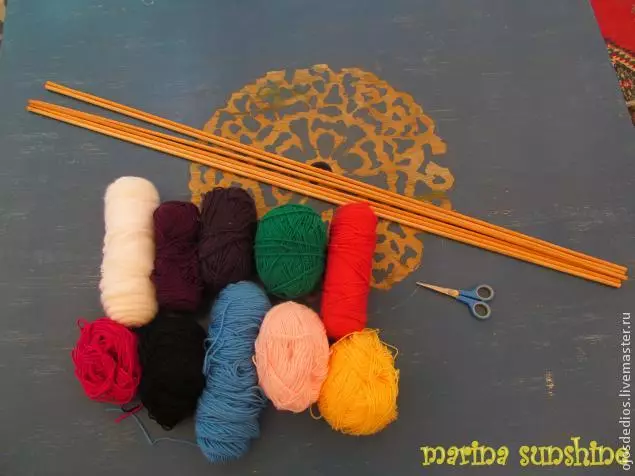
Color values
To select the color of yarn can help the description of the color values in the technique of weaving mandalas:Red - life, power, giving potential, heat, ability to act.
Pink - the color of love, responsiveness, warmth and caress.
Yellow - Sun, Moon and Stars, Male Start - Images; Suitable - joy and optimism, individuality and independence.
Blue - sky and water, intuition and wisdom, willpower and endurance, soothing color.
Brown - Earth, practicality and security.
Green is natural, harmony / equilibrium of feelings and the likelihood of development, creation and renewal, restoration of human forces, the integrity of the male and female start.
Black - death, all negative, dark and secret, at the same time emptiness, the appearance in self-consciousness of something dark, depression, loss or sadness.
Gray is neutral, but at the same time shows the lack of feelings and emotions.
Weaving instructions
At the beginning, two sticks are connected together in the center of the knot and then shifts the sticks relative to each other at an angle of 90 degrees, therefore, it turns out the cross. Since a 12-coal mandala is described in the master class, so it is necessary to make 3 such cross. In order for the sticks to have the shape of the cross, they need to be shaped diagonally 6-7 times, the threads will not give the sticks to shifts and change the straight angle.
It is necessary to check the strength of the design at this stage, otherwise, in some places, the threads can sane, which will affect the final type of mandala, it will look neakkurat.
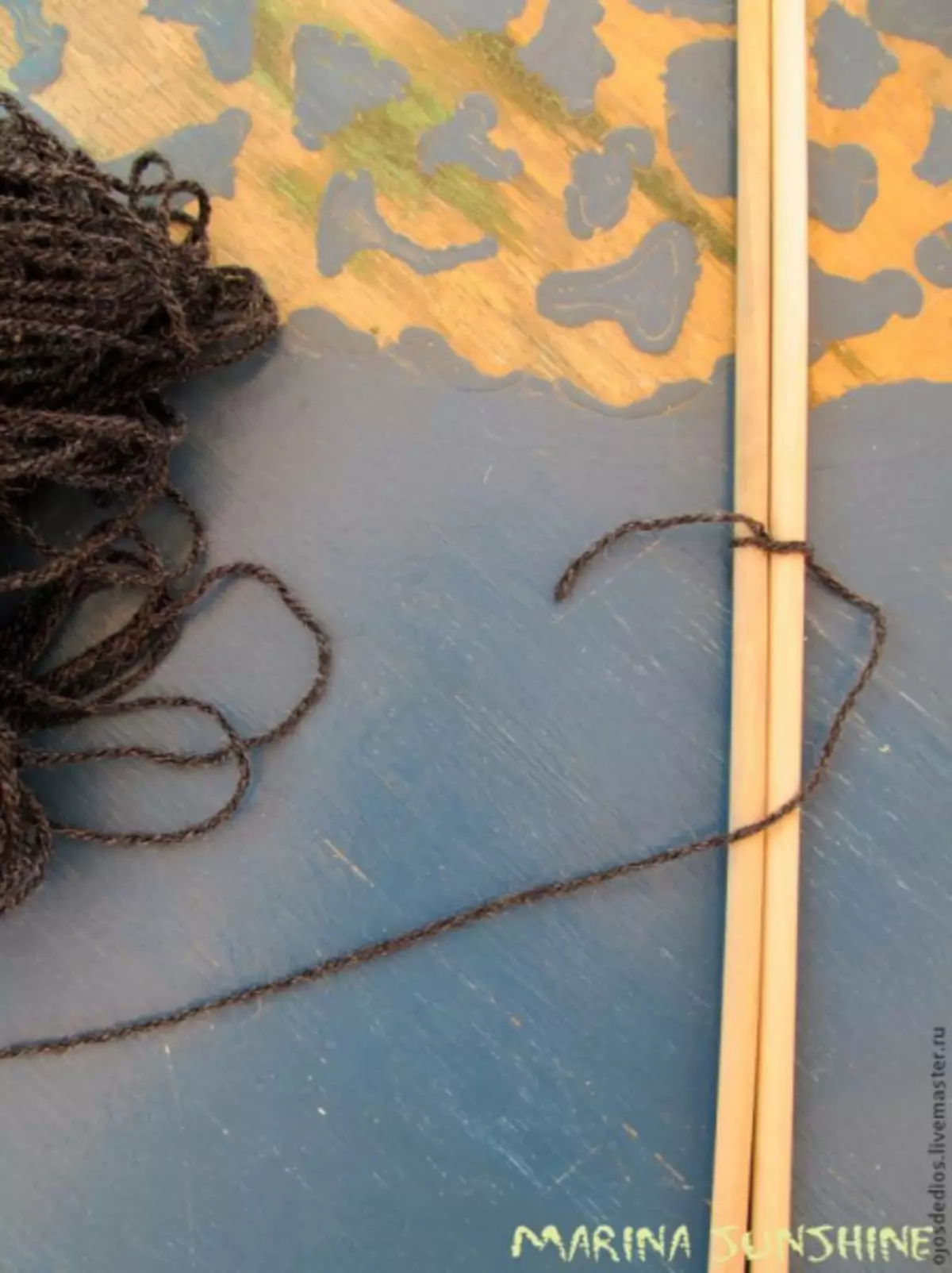
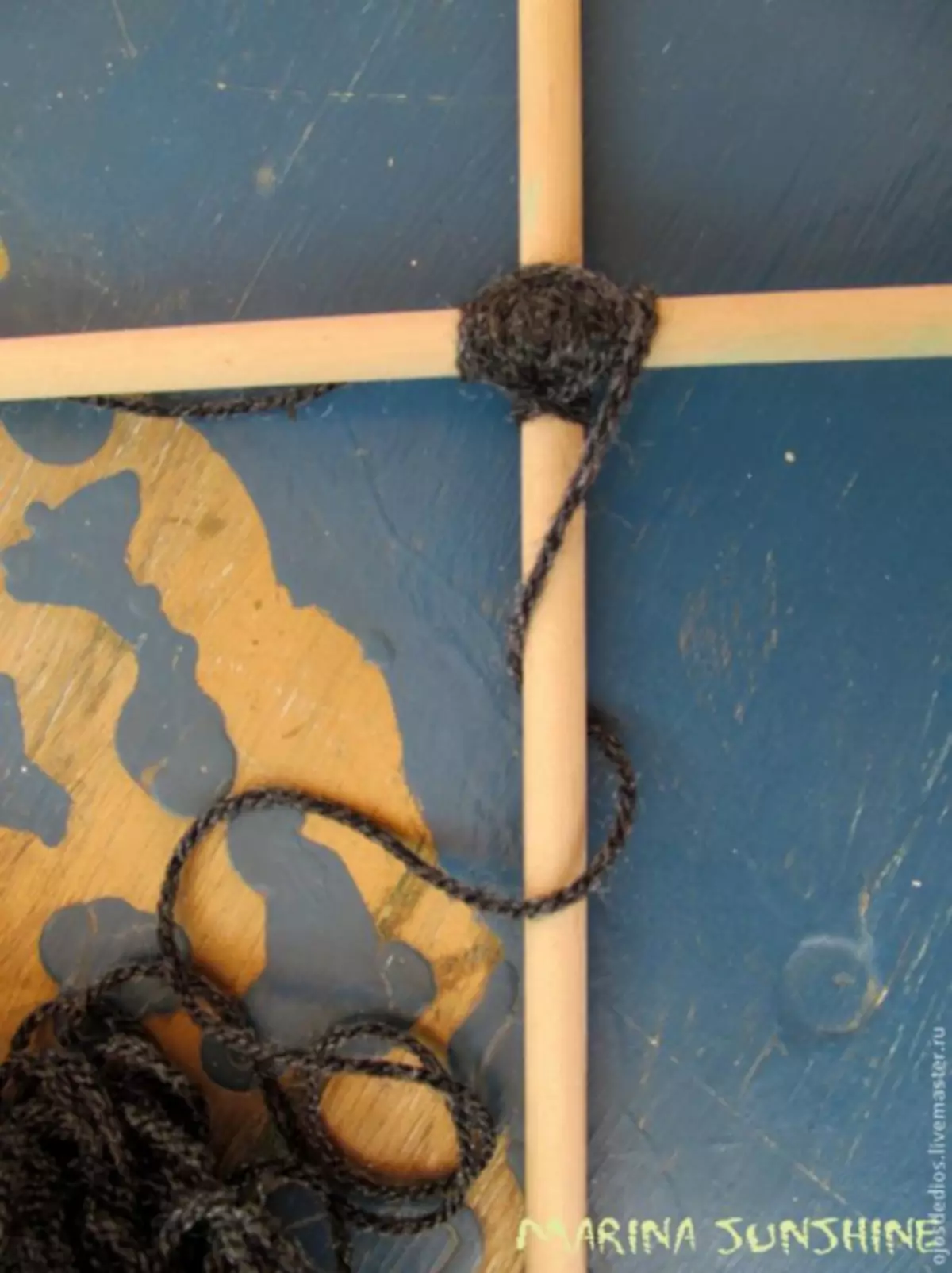
The central element of the mandala is the square, its color or combination of colors and the size depends only on the desire of the missing, but it must be equilateral, i.e. It is necessary to ensure that the straight angle will always be between chopsticks, the correct central square will lead to a beautiful result. The principle of weaving around the sticks: the first wand is made a single knot, the thread moves to the next stick, it makes one turn on it one turn and turns on the next, and so in a circle until the thread returns to the first wand - this is one row, the next row also begins With the full turn of the thread around the first stick. The weaving is ends with a certain color also a single knot on the first stick.
Article on the topic: Gifts for men do it yourself on February 23 with photos and video
Since it is necessary to spread three squares in 12 coal mandala, then by the first two others are made, they must be the same size, it means that the number of rows in each square is the same, but as in each square side must be identical, t .. Symmetry on all sides of the square (rows of weaving are stacked equally and alternately all the axes are shaved with a thread, the row ends in the same place where it began). Another condition of the beauty of the center being created, again, as well as all the other elements of the mandala - The laying of the ranks of the thread occurs not on the previous row, and next to it, and so that there is no wooden base.
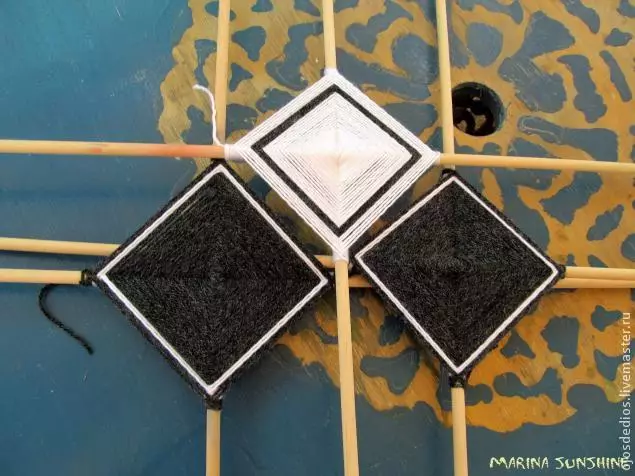
Tails from all previous threads of other colors are hiding in the process of weaving the next row, or you can arm a needle and the tip hide into the ranks of the same color.
Now there is a more difficult stage - creating a socket. All three squares should be connected together, combining their centers over each other, and, establishing the same angles between all axes. Weaving the sockets are practical to start from the upper square, because Threads with inside will hold two other lower squares.
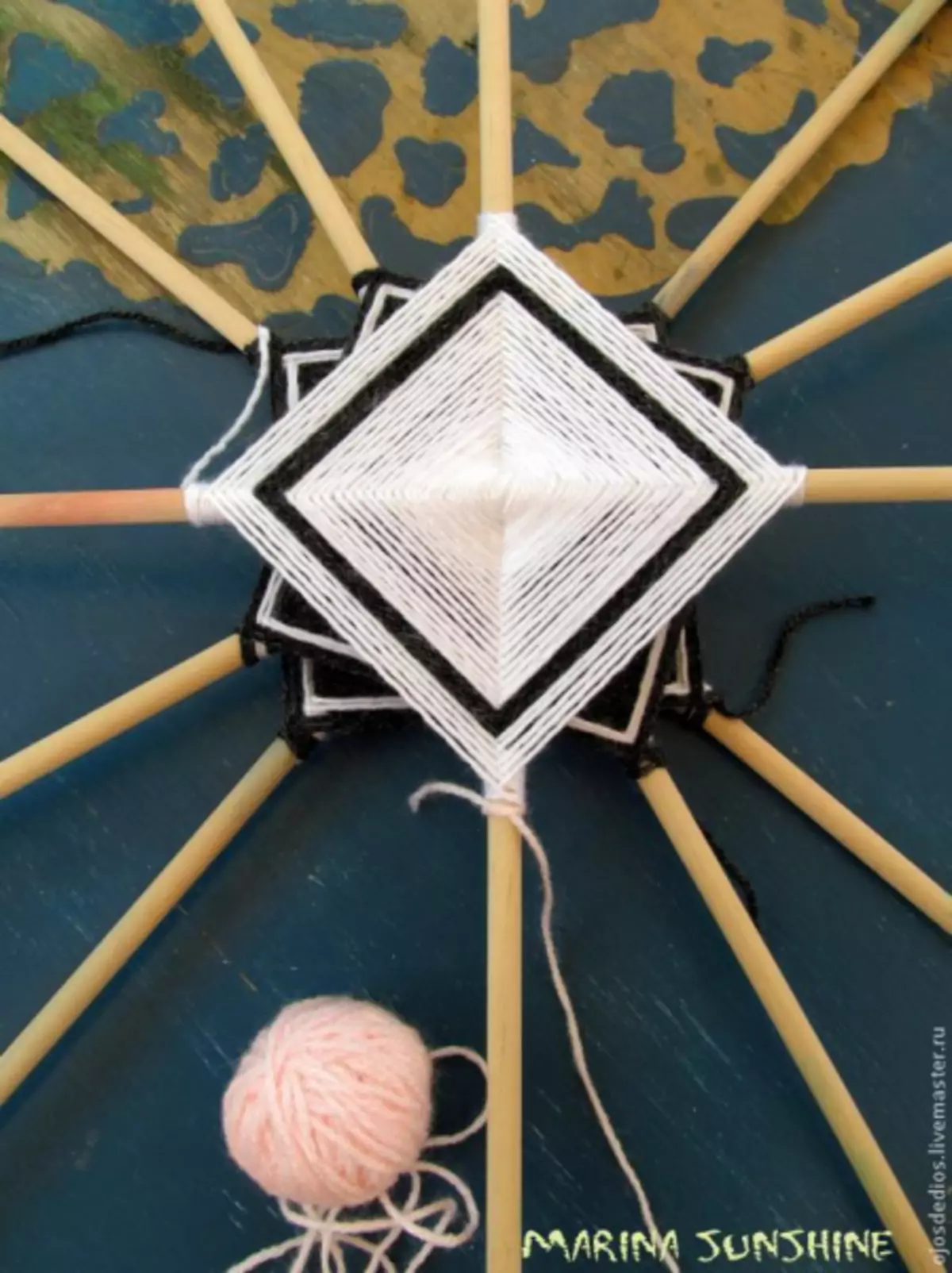
The start of the beam of the rosette looks from the opposite side as below the photo below, i.e. The opposite ends of one wand are departed, the threads lie next to each other, without crossbow.
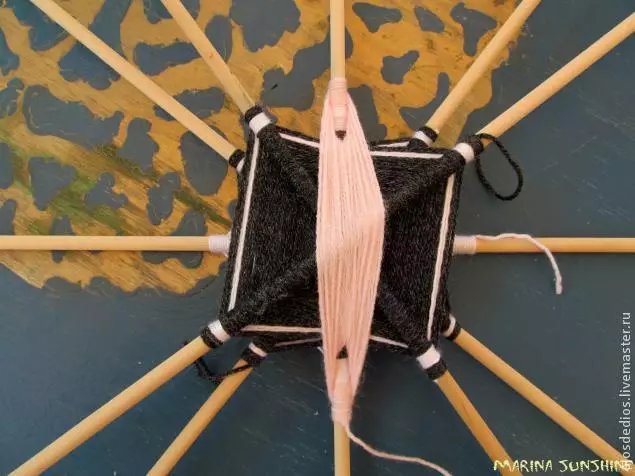
All rays of the outlet are soaked alternately, they can be monophonic or multicolored.
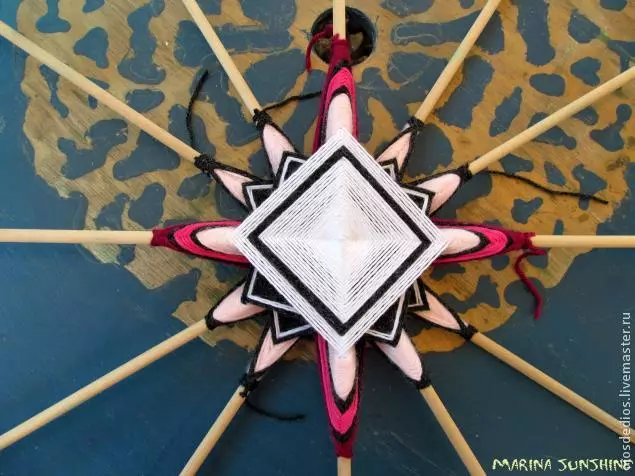
Note : On the four rays of the created outlet made more rows of threads, except the light pink, another color is added, bright pink. Subsequently, at the next stage of the rowing of squares, one of them will get more, therefore hexagon, and the belt woven after squares, a bit uneven, modified.
Then the square is created, which is done according to the scheme: the node on the first wand, the thread passes under two sticks and the third wand is soaked. Again, the square is made in the number of three pieces, with an equal number of rows in each.
Article on the topic: What furniture is needed in a teenager room?
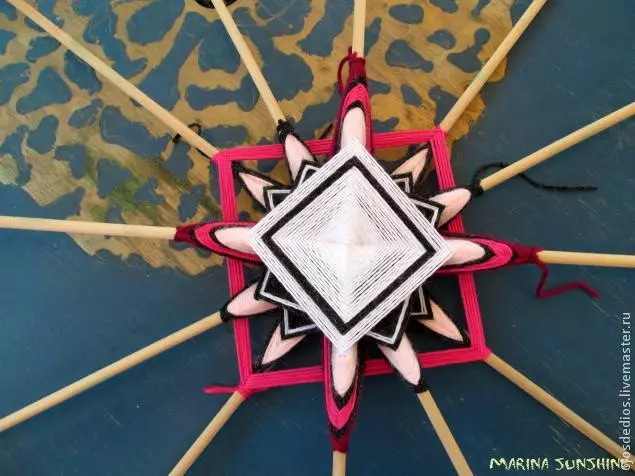
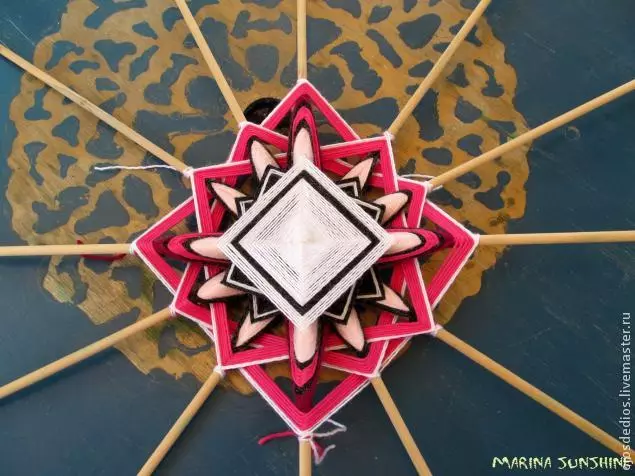
The next step is the weaving geometric shape - hexagon. Wood sticks through one, odd, i.e. 1st, 3rd, 5th, etc. Thread passes either over or under an uncomfortable axis. The hexagon can also be non-unique.
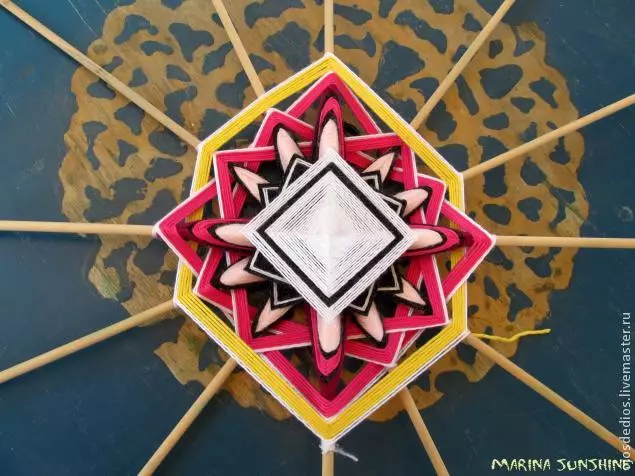
After creating an element of the "belt", it is called, because all the rays of mandala are soaked. But, as indicated in the note above, the belt turned out to be uneven. In order for the remaining nonsense ends of the sticks to make the same, one of the sticks from the opposite ends is partially not broken, the thread in the second part of the belt passes under it, not soaring.
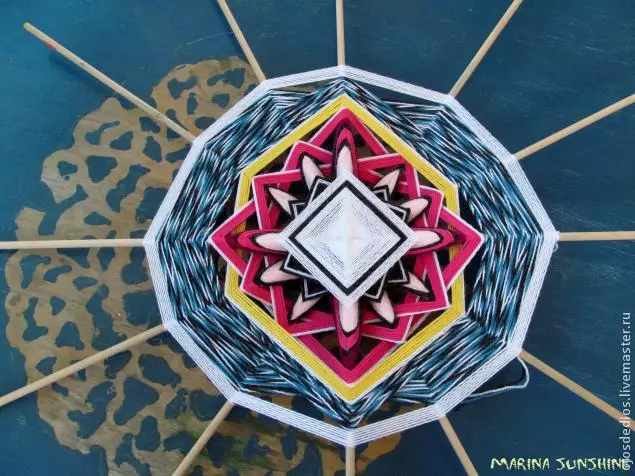
To create a variety, 2-3 threads are taken and twisted during weaving together. After the "belt" element, the squares are again (the thread goes through two on the third axis), similarly as brightly pink squares in the central part of the symbol (mandalas). Squares are visible in part, so the pattern is similar to the petals.
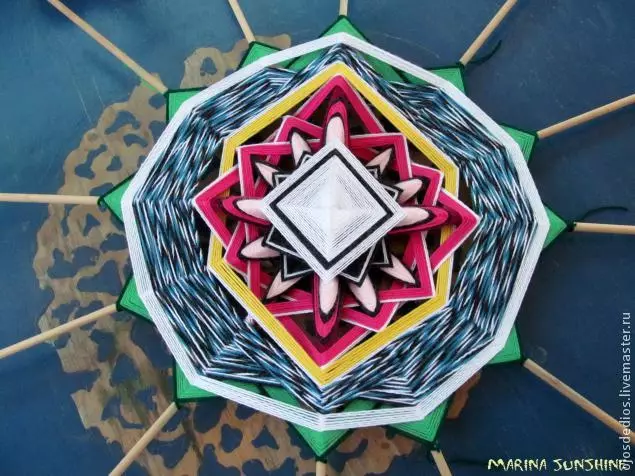
And a small belt ride again, and after it squares. In the presented version: one - white and two - blue, but you can create another color combination.
The penultimate stage in weaving this large mandala is weaving four separate elements with voids between them. It may be this image of the sides of the world, because in the Native American weaving technique there is a connection of 4 sides of the square and 4 sides of the world. Three beams are torn down in each.
The end of the whole weaving, as in most cases, is crowned with a belt, which can be made ripple, like the previous one. Ends of each stick, in addition, you can proper thread or decorate feathers, beads, tassels or pompons from yarn.
As a basis, you can take this scheme of mandala weaving, with your own hands to weave your own, unique, somewhere even a unique thing, because everyone who creates the mandala of its inner world and certain emotions at the time of weaving this sacred symbol. Mandala made can be an interior decoration at home or a protective family facing.
Article on the topic: Magazine "Irene" №4 2019
Video on the topic
Video tutorials will help increase the diversity of elements in the ornament of mandala.
